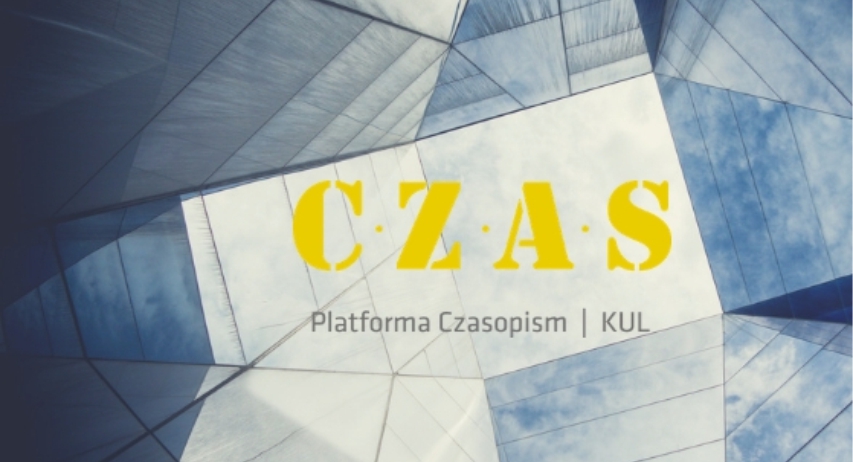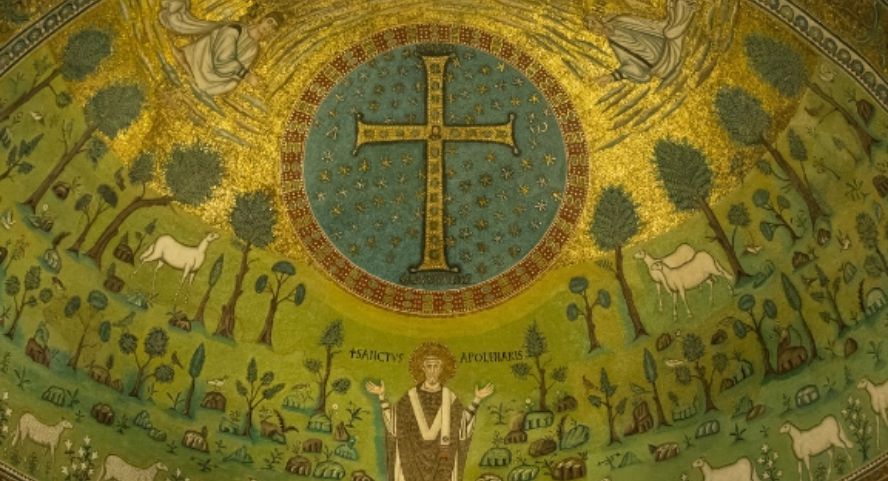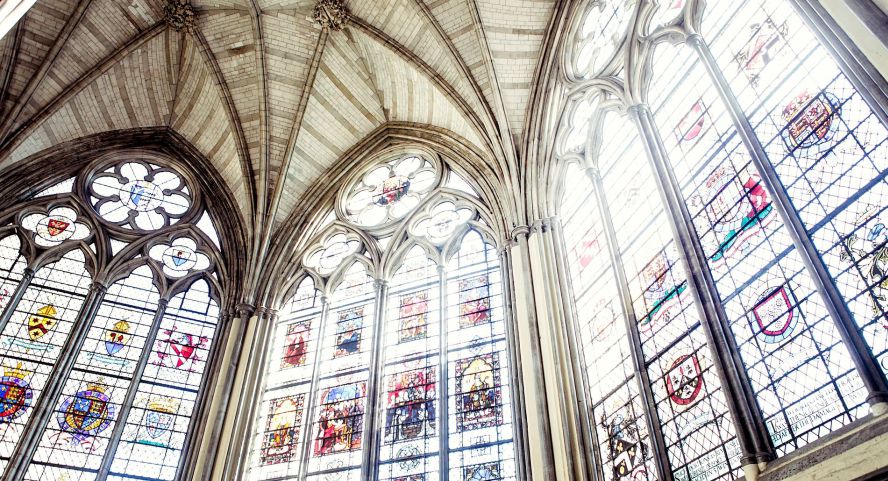Cross or Labarum? Character and Meaning of the Sign in the Central Quarter of Early Christian Sarcophagus in Museo Pio Cristiano in Rome (Lat. 171)
Dariusz Tabor
Pontifical University of John Paul II in Kraków , Polandhttps://orcid.org/0000-0001-8071-4174
Abstract
The topic of paper is a sign in the central quarter of the sarcophagus in Museo Pio Christiano Lat 171. This is shaft, crossed by horizontal bar with two birds and crowned by the monogram of Greek letters – X and P in wreath. Two roman soldiers are sitting on the both sides of shaft. Above there is the eagle with outstretched wings. Many scholar recognized in the sign the cross and in the soldiers the guard of Christ’s tomb. It provokes many doubts. The sign from the Constantin’s vision has been mentioned by Lactantius, Eusebius, Hermias Sozomen and Socrate of Constantinople. The symbol in the quarter is most similar to the sign related by Eusebius. The most probable models of studied sign was the image of two soldiers guarding labarum on coins and the representation of victorious emperor holding labarum on medals. In the research has been applied two methods - the iconological method with iconographic analysis, and the semiotic method using denotation and connotation, syntagma and paradigm. The most valuable results of research is recognition labarum in sign. This is a personalized symbol, representing Risen Christ-Victor as a source of everlasting life. The new contribution of its result is the most profound understanding of labarum.
Keywords:
labarum, vexillum, christological monogramm, passion sarcophagus, Constantin the Great, ChristReferences
Lactantius, De mortibus persecutorum, in: Lactance, De la mort des persécuteurs, v. 1,
ed. J. Moreau, SCh 39, Paris 2006.
Eusebius, Vita Constantini, in: Eusèbe de Césarée, La vie de Constantin, ed. F. Winkel-
mann – L. Pietri, tr. M.-J. Rondeau, SCh 559, Paris 2013.
Eusebius, Historia ecclesiastica, in: Eusèbe de Césarée, Histoire ecclésiastique et les
Martyrs en Palestine, livres VIII – X, ed. and tr. G. Bardy, SCh 41, Paris 1967.
Minutius Felix, Octavius, PL 3, 231-366C.
Socrates Scholasticus, Historia ecclesiastica, in: Socrate de Constantinople, Histoire ecclésiastique. Livre 1, ed. and tr. P. Périchon – P. Maraval, SCh 477, Paris 2004.
Sozomenus Hermias, Historia ecclesiastica, in: Sozomène, Histoire ecclésiatique, livre I – II, v. 1, tr. A.-J. Festugière, SCh 306, Paris 1984.
Tertullianus, Apologeticus, ed. E. Dekkers, CCSL 1, Turnhout 1954, p. 77-172.
Theodoretus, Interpretatio in XII epistulas s. Pauli, PG 82, 31-878.
Age of Spirituality. Late antique and early Christian Art third to seventh century Catalogue of the exhibition of through February 12, 1978, ed. K. Weitzman, New York 1979.
Bisconti F., I sarcophagi cristiani antichi: la produzione, la diffusione, la decorazione, in: Instrumentum domesticum: Archeologia Cristiana – temi, metodologia e cultura material della tarda antiquità e dell’ alto medioevo, v. 1, ed. G. Castiglia – P. Pergola, Cittá del Vaticano 2022, p. 259-307.
Bisconti F., Il Vessilio, il cristogramma, I segni della salvezza, in: L’edito di Milano e il Tempo di Tolleranza: Costantino 313 d. C., ed. G. Sena Chiesa, Milano 2012, p. 60-64.
Caillet J.-P. – Loose N.H., La vie d’éternité. La sculpture funéraire dans l’antiquité chrétienne, Paris – Genève 1990.
Forstner D., Świat symboliki chrześcijańskiej, tr. and ed. W. Zakrzewska – P. Pachciarek – R. Turzyński, Warszawa 1990.
Dresken-Weiland J., Bild grab und Wort. Untersuchungen zu Jenseitsvorstellungen von Christen des 3. Und 4. Jahrhunderts, Regensburg 2010.
Dresken-Weiland J., Imagine e parola: Alle origini d’iconografia cristiana, Citta del Vaticano 2012.
Grabar A., Die Kunst der frühe Christentums von den ersten Zeugnissen christlicher Kunst bis zur Zeit Theodosius I, München 1967.
Haan N. de – Hekster O., “In hoc signo vinces”. The various victories commemorated through the “labarum”, in: Monuments and memory: Christian cult buildings and constructions of the past. Essays in honour of Sible de Blaauw, ed. M. Verhoeven – L. Bosman – H. von Asperen, Turnhout 2016, p. 17-30. (Crossref)
Hezser B., Bild und Kontext. Jüdische und christliche Ikonographie der Spätantike, Tübingen 2018. (Crossref)
Keppie L., The Making of the Roman Army: from Republic to Empire, Oklahoma – London 2002. (Crossref)
Kobielus S., Krzyż Chrystusa: od znaku i figury do symboli i metafory, Warszawa 2000.
Kobielus S., Bestiarium chrześcijańskie, Warszawa 2002.
Koch G., Frühchristliche Sarkophage, München 2000.
Kryśkiewicz H.L., Rzymskie znaki legionowe: nomenklatura, typologia, symbolika, in: Z dziejów historii wojskowości Polski i powszechnej, ed. R. Gołaj-Dempniak – K. Kastran – D. Kąkol, Szczecin 2016, p. 9-30.
Kümmel H.G., Die Wende des Constantins und die Denkmäler, in: Die Konstantinische Wende, ed. E. Mühlenberg, Gütersloh 1998, p. 144-185.
List do Efezjan. Pismo święte Starego i Nowego Testamentu, tr. H. Langkammer, Lublin 2001.
List do Filemona. List do Kolosan, tr. B. Adamczewski, Częstochowa 2000.
Müller K., Das Kreuz: eine Objektgeschichte des bekanntesten Symbols von der Spätantiken bis zur Neuzeit, Freiburg – Basel – Wien 2022.
Popławski M., Bellum Romanum: sakralność wojny i prawa rzymskiego, Lublin 2011.
Cirlot J.E., Słownik symboli, tr. I. Kania, Kraków 2001.
Ryhes L. – Wilhoit J.C. – Longman III T., Słownik symboliki biblijnej: Obrazy, symbole, motywy, metafory, figury stylistyczne i gatunki literackie, tr. Z. Kościuk, Warszawa 1998.
Saggiorato A., I sarcofagi paleocristiani con scene di Passione, Bologna 1968.
Sansoni R., I sarcofagi paleocristiani a parte di citta, Roma 1969.
Stutzinger B., Die frühchristlichen Sarkophagenreliefs aus Rom, Bonn 1982.
Testini P., Le catacombe e gli antiqui cimiteri cristiani in Roma, Roma 1966.
Thümmel H.G., Ikonologie der christlichen Kunst. Band 1: Alte Kirche, Leiden – Boston – Singapore – Paderborn 2019. (Crossref)
Vildesah R., The Beauty of Cross. The Passion of Christ in Theology and in Arts from the Catacombs to the Eve of the Renaissance, Oxford 2000.
Zibawi M., La fioritura dell’arte cristiana, in: A. Crippa – M. Zibawi, L’arte paleocristiana. Visione e spazio dall’origini al Bisanzio, Milano 1998, p. 109-182.
Ziółkowski A., Wizja Konstantyna: reinterpretacja, “Vox Patrum” 4 (1983) p. 200-215. (Crossref)
Pontifical University of John Paul II in Kraków https://orcid.org/0000-0001-8071-4174
License

This work is licensed under a Creative Commons Attribution-NoDerivatives 4.0 International License.
Papers published in Vox Patrum are covered by the Attribution-NoDerivatives 4.0 International (CC BY-ND 4.0) licence. Authors and users can use published works licensed under the CC-BY-ND since 2018. For earlier publications, copyrights are available under fair use rights in accordance with the Act of February 4, 1994 on copyrights and related rights.







